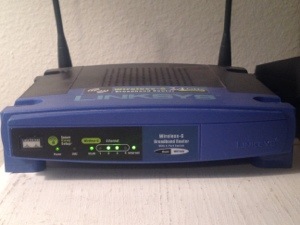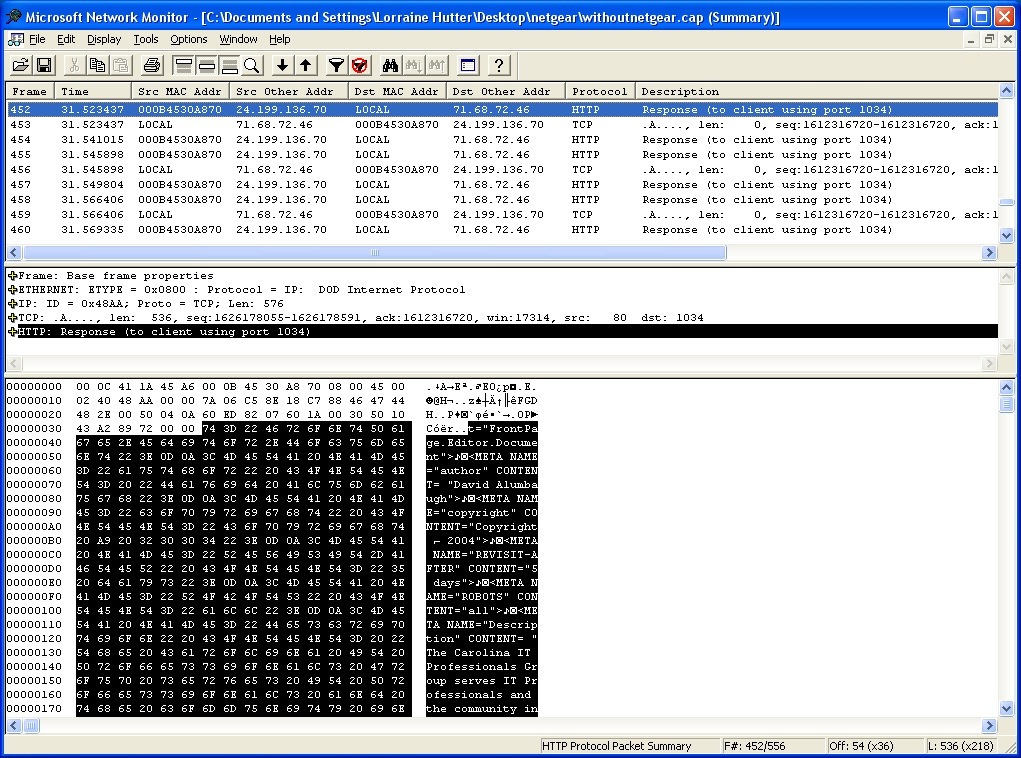What Would It Take To Make You Love What You Hate?

How many of you like to read network traces?
No hands
How many of you hate to read network traces?
Every hand went up.
The speaker was Krista Anders a trainer for Microsoft Corporation. And, while this class of 25 Microsoft Exchange support engineers was being taught at Microsoft’s training facilities in Las Colinas, TX, Krista told me that she started every class the exact same way. And always got the exact same reaction.
By the end of this three day course, you will LOVE to read network traces.
It was clear from their faces that no one believed her. That was okay. She didn’t expect them to. She’d been through this enough to know how it was going to turn out. And the more skeptical the students were at the beginning the more exciting the transformation was by the end.
Chances are you didn’t come to this blog to find out how to read network traces. Don’t worry, while they can be extremely interesting, I won’t take you through them. I want to talk about this course and this experience for two reasons.
First, I think it illustrates why we hate certain things and what we need to do to overcome that hatred.
Second, I wrote the course and it was one of the most amazing things I ever created.
Let me give a little background on network traces, so that you can understand what Krista was up against. Most people understand that computers “talk” to each other. If you’ve ever sat waiting for a web page to refresh, you know that sometimes computers talk v.e.r.y s.l.o.w.l.y. When that slowness happens for corporate customers, they call Microsoft for help.
Just as it’s possible to record a conversation between two people speaking, or texting, it’s possible to record a conversation between two computers talking. The results are called a network trace. . . and if you’ve ever seen one, it looks like someone threw a bomb into a dictionary. There are letters, but no words. If you look closely, you’ll notice the letters are all A, B, C, D, E and F. The reasons have to do with binary to hexadecimal conversions. (That’s the last we’ll talk about that topic here.)  (Image courtesy of net-analyst.com)
(Image courtesy of net-analyst.com)
If you don’t know what you are looking at, it can be confusing. If you are trying to help a customer and you don’t know what you are looking at, it can be very frustrating. Everyone in the class had been in support for at least 6 months and that meant they had looked at plenty of network traces.
You might as well try to translate Greek to English without ever having studied Greek.
The course was three days long, but it was really the same 20-30 minute lesson repeated over and over. In the first half hour we took people through a prerecorded network conversation between a Microsoft Outlook client and a Microsoft Exchange server. There are only about 8 things those two systems can say to each other. Once we covered those 8 commands it was simply a matter showing how to recognize each command in the network trace.
So, far this is no better than any lecture where the professor explained amino acids and how to recognize the different acids. (I have no idea how many amino acids exist.)
But, in the afternoon of the first day we started into the labs. Students worked in groups of two and they started making their own network traces. And then deciphering them.
The first time I taught this course, I got really nervous in the afternoon of the first day.
Ah. . .does anyone have any ques. . .
Quiet! I’m getting it.
It was amazing to watch the light of understanding dawn on each student’s face. A student would look at his lab partner.
Let’s try Calendar!
Yeah!
And at that point, it was simply a matter of practice, and testing different scenarios.
All of our instructors loved to teach this class. Krista told me about one class where a student approached her after the course was over.
When I got here and saw that we were going to be studying network traces, I decided there was no way I was going to subject myself to that torture for three days. But, then you issued that challenge that we’d learn to love traces. I stuck around just so that I could prove you wrong.
And?
I can’t. I loved this class. I can’t wait to get back to my desk and start trying new combinations.
What does this have to do with business development?
A lot, I think. I want to talk about people and processes.
People
Part of the reason EPA was such a challenging account for WordPerfect (How I saved the EPA) was the EPA’s chief email administrator was a very demanding person. She would question our answers. She would call with one question and then add another, and another and another. NO ONE wanted to talk to Bridget.
When I was assigned to work with the EPA, it meant, of course that I had to work with Bridget. Right around this time we had an email conference in Utah and Bridget attended. After meeting her and spending some time with her team an interesting thing happened. I no longer dreaded the phone ringing. I understood why she was asking such detailed questions. And I started to look forward to talking to her. I once figured out how to solve a particularly tricky problem and could hardly wait to call her and explain it.
Once I learned enough about her and her personality our relationship improved dramatically.
Processes
While working for a large non-profit in Utah, I managed the monthly maintenance for our 5 datacenters. Before I took over monthly maintenance, the Monday after the maintenance weekend was plagued with unexpected down time. They were called P1 incidents. And you did not want to be the manager who was associated with causing them. During a P1, pretty much everything stopped until the system was restored.
I took a different approach. If we had a P1 on Mondays, I constantly pestered the Major Incident Managers to know if I caused it during our maintenance over the weekend. P1s were often my only metric to know if something went wrong. If we missed a process, I wanted to know so that I could fix it and not miss that same process next month.
By understanding the value of the P1 designation, I could stop fearing it and start learning from it.
That was my intention anyway. I never really got to test that theory since my engineers did outstanding work and after taking over the monthly maintenance we never again caused a Monday morning P1.
So, from what I could see, the difference between hating a task and liking it was often a matter of education. Once the students understood network traces, they loved getting them from their customers since it was the quickest way to pinpoint the problem.
Even though I wasn’t reading network traces anymore, I found the same process applies to other scenarios as well.
(Rodney Bliss is an author, blogger, and IT manager. He’s been in the computer business for longer than he can remember. He lives in Pleasant Grove, UT with his wife and 13 children.)

Trackbacks & Pingbacks